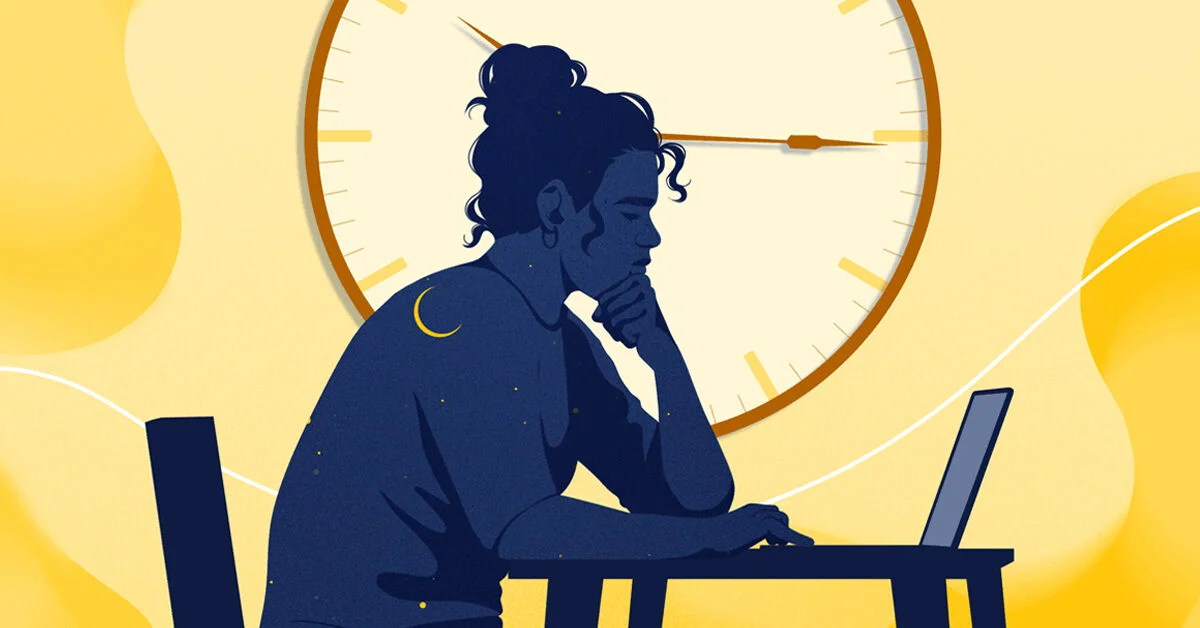If emotional disorders are characterized by something, it is because we cannot control our thoughts. Anxiety generates a series of negative, worrying automatic thoughts that can become obsessive when it comes to one of the worst faces of anxiety: Obsessive Compulsive Disorder.
Surely you have ever heard of OCD, but do you know what it really is? We imagine people with recurring or with a tendency towards perfectionism or cleanliness. However, OCD goes much further than all this: it involves the presence of symptoms such as obsessions and compulsions. These symptoms cause stress and anxiety, are time consuming and substantially disabling.
OCD is a neuropsychiatric disorder that can appear at any age, although the average age of onset is 19 to 20 years. On the other hand, about 25% of cases begin before the age of 14 and in children, particularly boys, and an associated tic disorder often appears. It appears in 1-3% of the population.
In this article, we will learn what each of the OCD symptoms (obsessions and compulsions) consists of, what types of it are the most frequent , and what must be fulfilled in order to diagnose OCD, according to the reference diagnostic manuals. We will also know some of the causes that are referred to when we talk about this disorder. Finally, we will talk about the most validated treatments for this disorder.
OCD: What is it and how does it develop?
Obsessive-Compulsive Disorder (OCD) is a mental disorder that involves the presence of obsessions, compulsions, or both. But what is each thing?
Obsessions are recurring thoughts, impulses or images that present themselves in an intrusive and unwanted way. The patient tries to neutralize them through some mental or behavioral compulsion. Many times, obsessions have to do with the fact that “if I don’t do X thing, something bad will happen.” That is to say, they frequently imply thinking about a misfortune (although the subject knows that it is something totally irrational).
Compulsions, for their part, are behavioral or mental rituals that the person performs in order to reduce the anxiety generated by the obsession.
That is, the obsessions are the ones that generate anxiety (because they are intrusive thoughts or images) and the compulsions are the actions that the person performs to eliminate said anxiety.
However, it is not necessary to manifest both symptoms to diagnose an obsessive-compulsive disorder; just by presenting one of the two, we could already diagnose it. Of course, the:
– Obsessions or compulsions take a long time, causing significant discomfort or deterioration in the person’s life.
– The symptoms are not attributed to other medical or pharmacological causes.
– The disturbance is not better explained by the symptoms of another mental disorder.
All types of TOCS that exist
What are the most common types of OCD? We explain them below:
1 Cleaning OCD
One of the most frequent types of OCD is cleaning OCD. In this type an obsession with cleanliness or personal appears. People who suffer from it have the obsession that they or their environment is contaminated.
The compulsion translates into a recurring cleaning of: areas of the house, hands or other parts of the body. The objective is to reduce the anxiety caused by that obsession that “everything is contaminated”.
2 Repeat OCD
In this case, we are talking about people who manifest an obsession related to repetition; an example of this obsession would be thinking that if an action is not performed a certain number of times, something bad will happen.
In this case, the obsession would be “if I don’t do this action X times, something bad will happen”, while the compulsion would be doing the action itself. The action can be thinking about something specific, that is, it does not have to be an “external” action.
3 Order TOC
Order OCD, as its name suggests, implies an obsession with order. They are people who use rules and guidelines to order everything they have. The obsession consists of thinking that, if you don’t do it, something bad will happen, and the compulsion is the action of ordering.
4 Check/Verify TOC
In checking OCD, people tend to constantly check everything. We are referring above all to checking actions such as: locking the door when leaving the house, locking the car, turning off the gas tap, etc. The obsession is to think that we have not really closed that matter and the compulsion is to double check that it has been closed.
The person may rationally “know” that they have actually closed it, but irrationally (and this is a characteristic of the disorder) they think that they have not really done so. That’s why he checks it again and again.
5 Accumulation OCD
Another of the most common OCD is accumulation OCD. In this case we are talking about people who keep many objects, objects without real value, just because of the “fear” of not having them if they are needed in the future.
Here the obsession is to think that we would be throwing away something important if we don’t save it and the compulsion would be to save the object itself. We must differentiate this disorder from the Diogenes syndrome; in this second case, we are talking above all about people with some type of dementia who ends up developing this obsession with accumulating.
6 Other types of OCD
We have talked about the most frequent OCD, but there are others: religious OCD, magical thinking, perfectionist OCD, impulsive OCD, etc. Below, you can find more information about them:
Other types of Obsessive Compulsive Disorder (OCD)
This Is Pollution OCD: A Life Ruining Disorder. Continuous hand washing is not the worst thing that can happen to you if you suffer from contamination OCD. We tell you everything you need to know about this Obsessive Compulsive Disorder, a disease that can ruin your life if you don’t solve it in time…
Symmetry OCD: what to do so that this disorder does not limit your life. There is an Obsessive Compulsive Disorder closely linked to order and balance that is symmetry OCD. Have you heard of him? Do you think you suffer? In Dario Feminine we explain what it is, what its consequences are and we give you the keys so that you can treat it and overcome it. Don’t let obsessions limit your life!
OCD numerology or arithmomania: when you can’t stop counting. There is an obsessive compulsive disorder related to numbers that is very striking. It is about numerological OCD or arithmomania. Do you know what exactly this Obsessive Compulsive Disorder consists of? How does it limit the life of those who suffer from it? How can it be treated? In Dario Feminine we talk about it.
Relational OCD: Are you obsessed that all your relationships are perfect? Your social, family and sentimental relationships can be affected if you suffer from relational OCD. Do you want to know more details about the terrible consequences of this Obsessive Compulsive Disorder? In Dario Feminine we tell you what it consists of and what the most appropriate treatment to overcome it is.
Dermatillomania: the dangerous OCD of scratching until it damages the skin. Dermatillomania is the dangerous OCD of compulsive scratching until it damages the skin, and it has serious consequences for the health of those who suffer from it. The obsession with tearing the skin is very harmful, but it has a treatment. Do you want to know more? We tell you everything!
Why does Obsessive Compulsive Disorder appear?
There is no single explanation for OCD. Normally, we speak of a multifactorial cause, where factors of different kinds are involved. Biological causes have also been postulated, and even manifested a certain predisposition to suffer from it.
On a medical level, the causes that have been most closely related to its appearance are: head injuries, infections, abnormal functioning of certain brain areas, family history, etc. At the psychological level, there has been talk of an as a possible etiological basis, as well as a tendency to ruminative thoughts, being anxious or anxious, having suffered physical or sexual abuse, etc.
Also, living through a stressful time (or experiencing a traumatic event) could intensify the symptoms of the disorder. In this way, what usually happens is that the predisposition to suffer from the disorder (for example, due to having a first-degree relative with OCD), is added a particularly stressful moment in life and other personality variables: for example, perfectionism or obsessive trend. Thus, we are not talking about a specific cause in OCD, but about several causes that would act together.
How is Obsessive Compulsive Disorder treated?
Psychological therapy
Since psychological therapy, there have been two most validated therapies for obsessive-compulsive disorder: exposure with response prevention (ERP) and cognitive therapy. When we talk about EPR, we are referring to a technique that consists of exposing the patient to his obsessions of him without him being able to execute the compulsions that he habitually uses to reduce anxiety.
It is a rather aversive technique and the patient has to be highly motivated to be able to carry it out, since not being able to execute the compulsion generates a lot of discomfort.
On the other hand, cognitive focuses on trying to modify dysfunctional thoughts associated with obsessions or compulsions. All these thoughts are reviewed with the patient and, in addition, strategies are offered so that they can manage anxiety and symptoms derived from OCD.
Drug therapy
Pharmacological therapy is also quite useful in OCD, at least to reduce the subject’s anxiety levels. In this sense, antidepressant drugs of the SSRI (selective serotonin reuptake inhibitors) or dual antidepressants (SNRI or IRND) types are frequently used.
More specifically, when it comes to treating OCD, among the antidepressants approved by the United States Food and Drug Administration (FDA), we find:
– Clomipramine (Anafranil) for adults and children from 10 years of age.
– Fluoxetine (Prozac), which is a type of SSRI, for adults and children 7 years and older.
– Fluvoxamine for adults and children from 8 years.
– Paroxetine (Paxil, Peeve) for adults only.
Of course, a multidisciplinary treatment is always recommended, which includes psychological and pharmacological therapy. Drugs are usually useful to reduce basic anxiety and the patient’s obsessive tendency, but without complementary psychotherapeutic work it will be very difficult toing the person.






